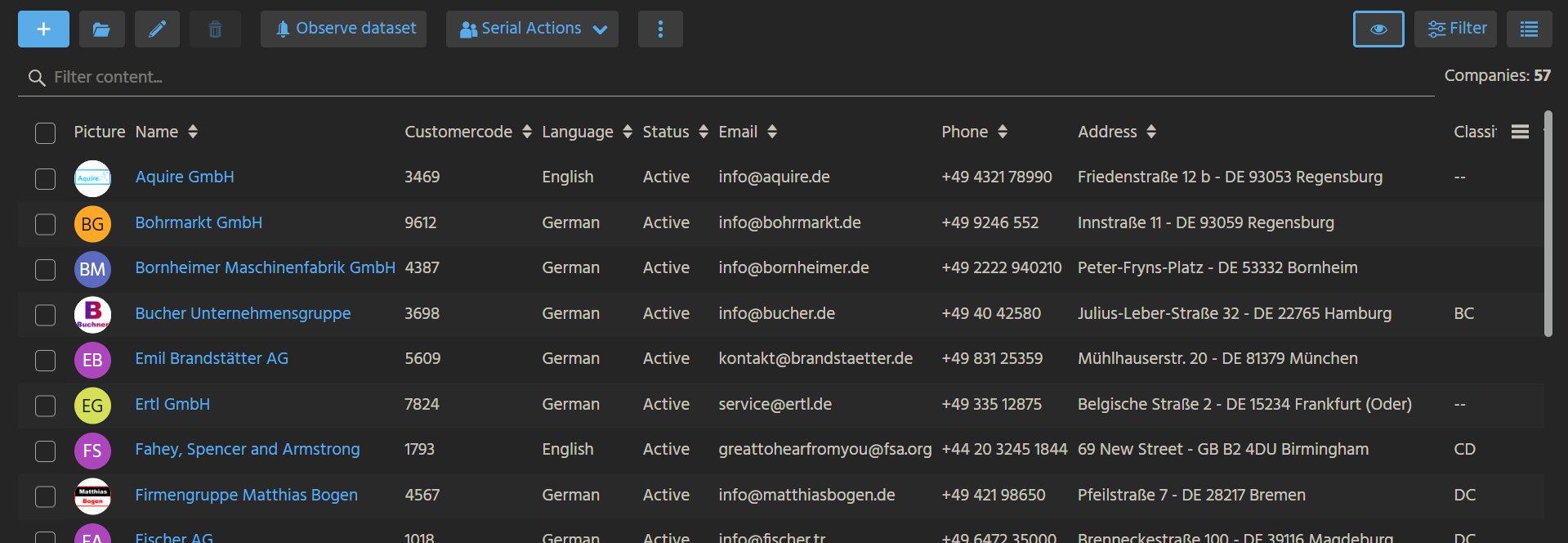Table
The Table ViewTemplate displays multiple fields from multiple datasets in a structured, tabular layout. It is designed for presenting overviews or result sets where each row represents one dataset and each column represents a specific EntityField of the associated Entity.
Usage Context
Example Implementation
An example of this ViewTemplate is Organisations, implemented in the OrganisationFilter_view within the Organisation Context.

Appearance in the Client
In the ADITO client, the example Table ViewTemplate can be found under:
Contact Management > Company
It displays a list of companies where each row corresponds to one record. The table includes the following columns: an image, followed by fields such as name, customer code, language, status, email, phone number, and address.
Configuration
columns
The fields to be displayed in the table are defined via the columns property. Users can configure this property interactively in the client:
- Use the plus button to add EntityFields as columns.
- Use the minus button to remove existing columns.
- Use the up/down arrows to reorder columns.
- Use the combo boxes to change field assignments within the editor.
In the example Organisations, the following EntityFields of the Organisation_entity are configured:
PICTURENAMECUSTOMERCODELANGUAGESTATUSSTANDARD_EMAIL_COMMUNICATIONSTANDARD_PHONE_COMMUNICATIONADDRESS_IDCLASSIFICATIONVALUE
hideContentSearch
This property controls the visibility of the content search bar (Context filter) above the table.
- If set to
true(default), the search bar is hidden. - If set to
false, the search bar is displayed.
The content search bar is only functional if paging is disabled. For this to work, the corresponding RecordContainer must have its isPageable flag set to false.